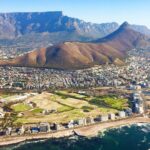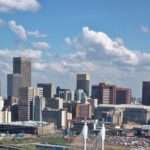Durban

Amidst the scenic coastal landscape lies Durban, the principal urban expanse in the KwaZulu-Natal province, serving as the preeminent seaport of South Africa. Nestled along Natal Bay, an indentation in the Indian Ocean, Durban’s genesis traces back to 1824 when a cohort of Cape Colony traders, spearheaded by Francis G. Farewell, meticulously surveyed and christened the locale as Port Natal. The tract was relinquished to this group by Shaka, the Zulu monarch, albeit the legitimacy of his authority in this matter remains contested. The vestiges of this historical episode stand in the form of the Old Fort, now an archival haven.
In 1835, on the grounds of Port Natal, Durban emerged, christened in honour of Sir Benjamin D’Urban, the distinguished governor of the Cape Colony. In the convoluted years of the late 1830s and early ’40s, skirmishes between the Boers and the British unfolded over the dominion of Durban, culminating in its municipal status in 1854 and subsequent cityhood in 1935.
Cascading along the shore, Durban’s panorama is overlooked by the Bluff to the south, an undulating elevation demarcating the bay from the ocean. Extending across the Umgeni River to the elevations of Durban North, its civic and commercial nucleus rests upon level terrain, gradually ascending towards the slopes of the Berea, an ivory-hued residential enclave circumferencing the harbour and coastline. The city’s array of green spaces encompasses the Botanic Gardens, replete with an orchid sanctuary, Jameson Park boasting vibrant rose gardens, and Snake Park harbouring a repertoire of venomous reptiles.
Housing the University of KwaZulu-Natal, amalgamated in 2004 through the fusion of the University of Durban-Westville, initially tailored for Indian scholars from 1961 (embracing non-Indians from 1979), and the University of Natal, established in 1910, Durban resonates with cultural vibrancy. Museums and vibrant markets dot the landscape, while the Moses Mabhida Stadium within the expansive King’s Park Sporting Precinct hosts an array of cultural and athletic spectacles, anchoring a commercial, retail, and recreational sector.
The metamorphosis of Durban’s harbour, a pivotal global trade nexus inaugurated in 1855, commenced catering to the industrial exigencies of the Witwatersrand region. Evolving into a paramount container port, it serves as the gateway for bulk raw materials, capital goods, and industrial machinery. Exports encompass minerals, coal, sugar, and grains, while refined oil is piped to Johannesburg. In the post-World War I epoch, Durban transmogrified from a prim Victorian township into a modern metropolis, marked by the ascent of skyscrapers and multistoried edifices. It stands as the epicentre of South Africa’s sugar industry and a hub for a diversified spectrum of manufacturing activities. The tourism fabric, woven intricately, draws strength from Durban’s proximity to KwaZulu-Natal’s wildlife reserves, natural havens, and the allure of its sun-kissed beaches, adorned with a promenade and an oceanarium.
Durban, coupled with its contiguous counterpart Pinetown, boasts a demographic mosaic where the Indian populace eclipses the white residents. This zone stands as one of the most concentrated hubs of Indian settlement in South Africa. Adjacent districts, namely Ntuzuma, Umlazi, and Embumbulu, emerged as commuter suburbs, primarily inhabited by the black populace, predominantly of Zulu descent. The late 1970s witnessed a mass relocation of black communities from Durban to these peripheries, orchestrated under the aegis of apartheid policies. Governed by the Ethekwini municipality, Durban epitomizes a confluence of history, diversity, and urban evolution.
Map view
Recommended Hotels
About Durban from Wikipedia
| ID |
|---|
| 131092 |
| Name |
| Durban |
| State ID |
| 935 |
| State Code |
| KZN |
| State Name |
| KwaZulu-Natal |
| Country ID |
| 204 |
| Country Code |
| ZA |
| Country Name |
| South Africa |
| Latitude |
| -29.85790000 |
| Longitude |
| 31.02920000 |
| WikiData ID |
| Q5468 |




